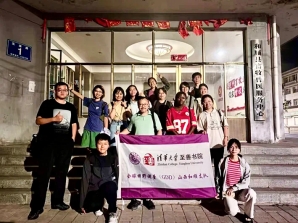• Ecological Revitalization in Heshun’s Fields: Grounded in the Land, Youthful Dreams in Ink
Global Field Study in Heshun, Shanxi
In early July 2025, the Zhishan Academy Global Field Study team conducted a social survey in Heshun County, Jinzhong, Shanxi, focusing on ecological civilization and rural revitalization.

Guided by faculty and teaching assistants, students transitioned from city life to the tranquility of the countryside, turning textbook knowledge into real-world experience. Over ten days, the team visited Heshun’s urban and rural areas—including Mafang Township and Hengling Town—exploring its history, honoring its revolutionary legacy, and observing its ongoing development.
• Background
Heshun County, located in eastern Jinzhong with a total area of 2,250 km² and a population of 121,600, has a rich cultural and revolutionary history. During the War of Resistance against Japan, key Communist military meetings were held here, shaping guerrilla warfare strategies and establishing anti-Japanese bases. Students visited the Shiguai Conference Memorial to reflect on this legacy.

Heshun is also ecologically significant, with forest coverage reaching 34%, providing a key habitat for North China leopards. The county produces high-quality coal, dolomite, and geographically protected Heshun beef. Efforts to balance ecological protection and industrial development sparked the team’s research interest.
• Government Meetings
The team met with officials from the Heshun County government, Mafang and Hengling township authorities, and Xigou Village Committee. Through these exchanges, students gained deeper insight into local conditions and honed their skills in asking thoughtful questions.

• Household Surveys
The team conducted household surveys in Leyi Village (Mafang) and Shangbeshe Village (Hengling), focusing on ecological conservation and rural revitalization, particularly through the work of the conservation organization Big Cats China (BCG).

1. Leyi Village
Nestled in a valley within the Tieqiaoshan Nature Reserve, Leyi is home to 74 residents with an average age of 67. It is also a habitat for 4–6 adult North China leopards. BCG’s “Leopard-Friendly Farmland” initiative works with villagers to promote conservation-friendly agriculture, support wildlife food sources, and maintain ecological corridors. Students explored challenges such as rural aging, population decline, and leopard protection, while experiencing village life firsthand—herding cattle and working the land.

2. Shangbeshe Village
This village is known for its free-range cattle farming and high density of North China leopards. With wild prey decreasing and cattle numbers increasing, human-leopard conflict has intensified. BCG supports infrared camera monitoring, habitat restoration, and a government-backed wildlife damage compensation program. Students compared Shangbeshe’s demographics and economy with Leyi’s, examining how these factors influence conservation efforts.

• Conclusion
Through this field study, students gained practical experience in sociological research methods and a deeper understanding of rural realities. Using GDD as a case study, the team explored how grassroots organizations and local communities can collaborate to achieve both ecological and economic sustainability.
As they left Heshun, the Taihang Mountains stood verdant and enduring—a reminder that the footprints of leopards and the light of history continue to shape the path forward.

